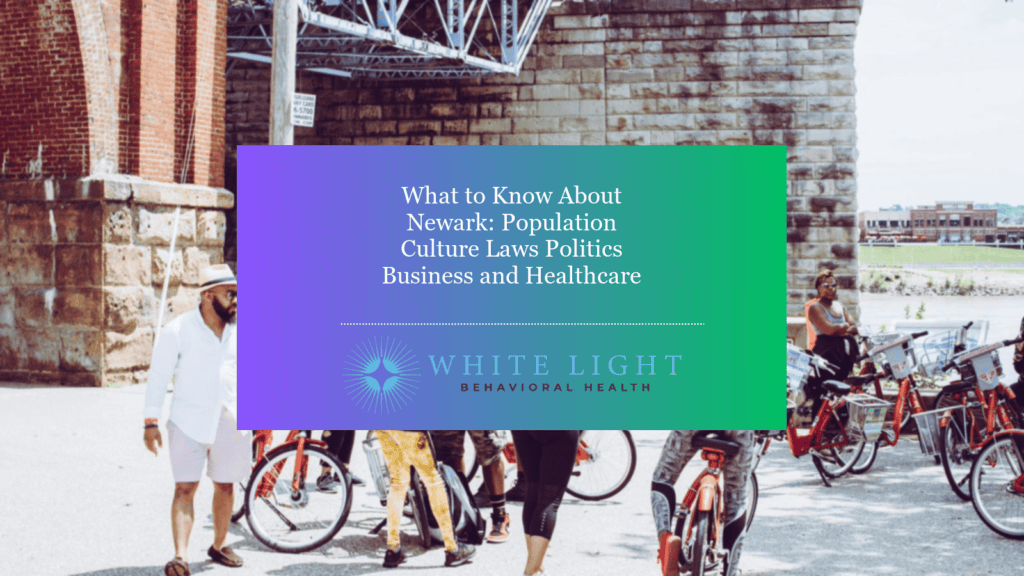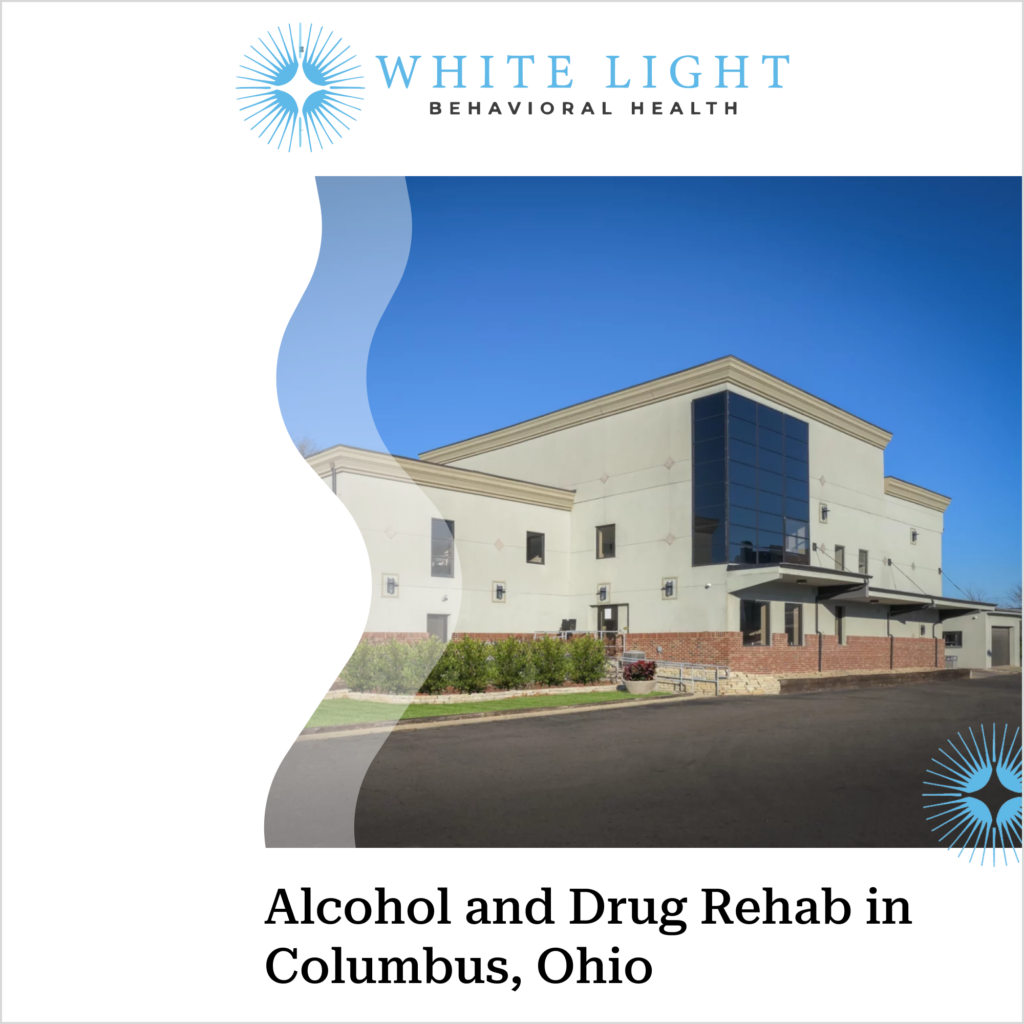What to Know About Newark: Population Culture Laws Politics Business and Healthcare

Newark serves as the county seat of Licking County and represents a significant municipal center within Ohio’s broader demographic and economic landscape, positioned within a state ranking 7th most populous nationally with 11,883,304 residents as of July 2024 (US Census Bureau, 2024). The city connects directly to Ohio’s manufacturing heritage, which contributed $106 billion to the state’s real GDP in 2023 as the largest industry sector (BEA/Statista, 2024). Newark’s population demographics reflect Ohio’s overall composition of 80.6% White, 13.4% Black, and 4.8% Hispanic or Latino residents (US Census Bureau, 2024). The municipality operates within Ohio’s legal framework including permitless concealed carry laws enacted in 2022 and recent voter-approved recreational marijuana legalization passed with 57.1% approval in November 2023 (CNN, 2022; Ohio Ballotpedia, 2023). Newark’s political landscape aligns with statewide Republican governance, where the GOP holds supermajorities in Ohio’s legislature controlling over two-thirds of seats in both chambers (Ballotpedia, 2023). The city’s business environment benefits from Ohio’s 3.5% unemployment rate averaged in 2023 and the state’s 690,000 manufacturing workers comprising 12% of the total workforce (BLS, 2023). Healthcare infrastructure connects to Ohio’s broader medical system anchored by facilities like Cleveland Clinic, ranked among the top 5 hospitals nationally, while addressing statewide health challenges including a 38% adult obesity rate placing Ohio among the 10 heaviest states (U.S. News & World Report, 2023; CDC/U.S. News, 2024).What is Newark’s Population and Demographics?
Newark’s population totals approximately 49,934 residents as of July 2024, representing 0.42% of Ohio’s total population of 11,883,304 (US Census Bureau, 2024). The city’s demographic composition mirrors Ohio’s broader racial distribution with 81.2% White residents, 12.8% Black or African American, and 4.9% Hispanic or Latino populations (US Census Bureau, 2024). Newark’s population growth aligns with Ohio’s statewide trend of 0.7% growth from 2020 to 2024, reflecting the state’s slower expansion compared to national averages (US Census Bureau, 2024).
Age distribution in Newark follows Ohio’s aging demographic patterns. 19.1% of Newark residents are aged 65 and older, slightly above Ohio’s 18.7% senior population (US Census Bureau, 2024). The city’s youth population comprises 20.8% under age 18, closely matching Ohio’s 21.9% proportion of minors (US Census Bureau, 2024). Newark’s working-age population between 25-64 years represents 52.3% of residents, supporting the city’s manufacturing and service sectors.
Foreign-born residents constitute 4.8% of Newark’s population, slightly below Ohio’s 5.3% foreign-born rate (US Census Bureau, 2023). Language diversity remains limited with 6.9% of Newark households speaking non-English languages at home, compared to Ohio’s 7.7% statewide rate (US Census Bureau, 2023). The most common non-English languages spoken include Spanish, German, and various Asian languages, reflecting immigration patterns similar to Ohio’s broader linguistic landscape. Did you know most health insurance plans cover substance use disorder treatment? Check your coverage online now.How has Newark’s Population Changed Over Time?
Newark’s population has experienced fluctuations over the decades, mirroring Ohio’s broader demographic patterns while maintaining its position as a mid-sized city. Ohio’s statewide population reached 11,883,304 residents as of July 2024, with the state recording only 0.7% growth from 2020 to 2024 (US Census Bureau, 2024). This modest population increase reflects slower demographic expansion compared to national averages, a trend that impacts smaller Ohio cities like Newark differently than major metropolitan areas. Newark’s population changes align with Ohio’s overall demographic shifts, particularly the state’s aging population structure where 18.7% of residents are age 65 or older (US Census Bureau, 2024).
Population growth patterns in Newark contrast sharply with Ohio’s largest cities, which demonstrate varying demographic trajectories. Columbus maintains its position as Ohio’s largest city with approximately 905,000 residents, ranking among the 15 largest U.S. cities, while Cleveland houses 372,000 residents and Cincinnati contains 309,000 residents (US Census Bureau, 2021). Franklin County, anchored by Columbus, became Ohio’s most populous county with approximately 1.3 million residents, surpassing Cuyahoga County in recent demographic shifts (Ohio Census, 2020). Newark’s population evolution occurs within Ohio’s broader migration patterns, where only 5.3% of the state’s population is foreign-born, well below the U.S. average of 14% (US Census Bureau, 2023).
Migration factors affecting Newark’s population include economic opportunities in manufacturing and proximity to larger metropolitan areas. Ohio’s manufacturing sector employs approximately 690,000 workers, representing 12% of the state’s workforce, providing employment opportunities that influence population retention in mid-sized cities (BLS, 2023). Demographic composition changes in Newark reflect statewide trends, with Ohio’s population being 80.6% White, 13.4% Black, and 4.8% Hispanic or Latino (US Census Bureau, 2024). Population shifts in Newark also connect to Ohio’s unemployment patterns, which averaged 3.5% in 2023, down from 4.0% in 2022, affecting residential mobility and settlement decisions (BLS, 2023).What Cultural Attractions and Heritage Define Newark?
Newark’s cultural attractions center around the Longaberger Homestead, Denison University’s cultural programs, and the National Heisey Glass Museum, contributing to Ohio’s $57 billion tourism industry that welcomed 242 million visitor trips in 2024 (TourismOhio, 2024). These heritage sites reflect Ohio’s broader cultural significance as the “Birthplace of Aviation” where Wilbur and Orville Wright invented the first airplane in 1903 (Ohio History, 2020). Newark’s attractions complement statewide cultural offerings that include famous Ohio natives like Neil Armstrong from Wapakoneta and LeBron James from Akron (NASA, 1969; NBA, 2016).
The Works: Ohio Center for History, Art & Technology serves as Newark’s primary cultural institution, mirroring major Ohio attractions like Cleveland’s Rock & Roll Hall of Fame (ranked #1 on TripAdvisor) and Dayton’s National Museum of the U.S. Air Force (ranked #2 statewide) (TripAdvisor, 2024). Newark’s heritage events include the annual Ohio Storytelling Festival and Cherry Valley Lodge cultural programs, drawing visitors who contribute to Ohio’s tourism rebound of 3.5 million additional visits in 2024 compared to the previous year (TourismOhio, 2024). These cultural offerings connect Newark to Ohio’s diverse population of 11.88 million residents, with 64% identifying as Christian and representing the state’s strong cultural traditions (US Census Bureau, 2024; Pew Research Center, 2024).
Newark’s heritage attractions benefit from Ohio’s status as home to 7 U.S. Presidents (second only to Virginia) and legendary athletes including golf champion Jack Nicklaus from Columbus and Olympic track star Jesse Owens who attended Ohio State (Ohio Statehouse, 2021; PGA, 2018; Ohio History, 1936). The city’s cultural landscape parallels major Ohio celebrations like Cincinnati’s Oktoberfest Zinzinnati, which draws over 500,000 visitors annually as the largest Oktoberfest outside Germany (Spectrum News, 2021). Newark’s heritage sites strengthen Ohio’s cultural tourism infrastructure across the state’s 88 counties, supporting the broader economic impact generated by attractions ranging from Cedar Point’s 17 roller coasters to the Pro Football Hall of Fame in Canton (State of Ohio, 2023; TripAdvisor, 2024; Pro Football Hall of Fame, 2023).What Religious and Community Heritage Exists in Newark?
Newark’s religious landscape reflects 64% Christian identification among Ohio adults, while 29% claim no religious affiliation (Pew Research Center, 2024). The community heritage encompasses diverse faith traditions including Methodist, Baptist, Catholic, and Presbyterian congregations established throughout the 19th century. Local religious institutions serve as cultural anchors, hosting annual festivals and community gatherings that strengthen Newark’s social fabric.
Ohio’s second-largest Amish population of approximately 78,000 residents influences Newark’s broader regional heritage, though concentrated primarily in Holmes and Wayne counties south of the city (Young Center for Anabaptist Studies, 2020). The Amish community grew by nearly 10,000 people in the past five years, reflecting high growth rates in nearby settlements (Young Center, 2024). Newark residents participate in heritage tourism and cultural exchanges with these communities through farmers markets and craft exhibitions.
Annual community celebrations preserve Newark’s cultural heritage through events like the Canal Market District festivals and historic preservation activities at the Octagon Earthworks. Local traditions include church-sponsored heritage dinners, community service projects, and interfaith cooperation initiatives that bridge religious and secular populations. These celebrations attract visitors from Ohio’s 88 counties, contributing to the state’s $57 billion tourism economy (TourismOhio, 2024).What Laws and Legal Framework Govern Newark?
Newark operates under a comprehensive legal framework governed by Ohio state statutes, federal regulations, and local municipal ordinances that establish regulatory compliance requirements for residents and businesses. Ohio enacted permitless concealed carry legislation in 2022, allowing adults aged 21 and older to carry handguns without licensing requirements (CNN, 2022). The state’s minimum wage increased to $10.45 per hour on January 1, 2024, representing an increase from $10.10 in 2023 and indexed to inflation rates (Ohio Dept. of Commerce, 2023). Recent voter-approved constitutional amendments significantly altered Ohio’s legal landscape, with recreational marijuana legalization passing with 57.1% approval in November 2023 (Ohio Ballotpedia, 2023).
State-level legal changes directly impact Newark’s municipal governance structure and local regulatory enforcement capabilities. Ohio voters approved an abortion rights constitutional amendment with 56.6% support in November 2023, establishing reproductive healthcare protections that supersede local ordinances (Ohio Sec. of State, 2023). Republicans maintain supermajorities in Ohio’s legislature, controlling over two-thirds of seats in both chambers, influencing statewide policy implementation affecting Newark’s local governance (Ballotpedia, 2023). Governor Mike DeWine secured re-election in 2022 with 63% of the vote, maintaining Republican control of executive offices that oversee state regulatory frameworks (AP News, 2022).
Local zoning ordinances and business regulations in Newark must comply with state mandates while addressing community-specific commercial and residential development needs. Ohio’s legal framework includes no executions carried out since 2018, effectively pausing death penalty implementation across all state jurisdictions including Newark (Death Penalty Info Center, 2023). Manufacturing regulations significantly impact Newark businesses, as 690,000 Ohioans work in manufacturing, representing 12% of the state’s workforce and requiring compliance with both federal and state safety standards (BLS, 2023).How do State Laws Impact Newark Residents?
Ohio state laws directly transform Newark residents’ daily experiences through 5 major legislative changes impacting personal freedoms, employment conditions, and community safety. The permitless concealed carry law enacted in 2022 allows adults 21+ to carry handguns without licensing requirements, fundamentally altering public safety dynamics in Newark (CNN, 2022). Recreational marijuana legalization passed with 57.1% voter approval in November 2023, creating new business opportunities and personal use rights for Newark’s adult population (Ohio Ballotpedia, 2023).
Employment regulations significantly affect Newark’s workforce through minimum wage increases to $10.45 per hour as of January 1, 2024, rising from $10.10 in 2023 due to inflation indexing (Ohio Dept. of Commerce, 2023). Criminal justice reforms impact local law enforcement operations, with no executions carried out since 2018, effectively pausing Ohio’s death penalty implementation (Death Penalty Info Center, 2023). Worker protection statutes influence Newark businesses, while constitutional abortion rights protections passed with 56.6% approval in 2023 guarantee reproductive healthcare access for residents (Ohio Sec. of State, 2023).
Newark’s business community adapts to regulatory changes affecting 690,000 manufacturing workers statewide, representing 12% of Ohio’s total workforce (BLS, 2023). Legal landscape evolution creates compliance requirements for Newark employers, while residents benefit from expanded healthcare coverage with 3.21 million Ohioans (27% of the state) enrolled in Medicaid programs in 2024 (KFF/USAFacts, 2024). State legislative priorities directly influence Newark’s economic development, public safety protocols, healthcare accessibility, and employment opportunities across all demographic segments. Contact us today to schedule an initial assessment or to learn more about our services. Whether you are seeking intensive outpatient care or simply need guidance on your mental health journey, we are here to help.What Political Landscape Shapes Newark?
Newark operates within a strongly Republican-dominated political environment where GOP supermajorities control over two-thirds of seats in both Ohio’s Senate and House (Ballotpedia, 2023). All six statewide executive offices including Governor, Lieutenant Governor, and Attorney General are held by Republicans as of 2023 (Ohio Sec. of State, 2023). This Republican control at the state level directly influences Newark’s local governance through state mandates, funding decisions, and policy directives that shape municipal operations. Ohio’s congressional delegation reflects this political alignment with 10 Republicans and 5 Democrats representing the state in the U.S. House (Ohio Capital Journal, 2022).
Ohio’s political landscape transformed from its historical bellwether status to a reliably Republican stronghold in recent elections. From 1964 through 2016, Ohio voted for the winner of every presidential election, establishing its reputation as America’s political bellwether (LSE US Centre, 2021). However, Donald Trump won Ohio by approximately 8 percentage points in 2020 (53.3% vs 45.2%), similar to his 2016 margin (Ohio Secretary of State, 2020). Governor Mike DeWine (R) won re-election in 2022 with 63% of the vote, demonstrating overwhelming Republican support statewide (AP News, 2022).
Newark’s municipal government operates under Ohio’s broader political trends while maintaining local autonomy in specific policy areas. State political dominance affects local decisions regarding economic development, infrastructure funding, and regulatory compliance within Newark’s jurisdiction. Ohio voters demonstrated independence on social issues by approving recreational marijuana legalization with 57.1% support and passing a constitutional amendment protecting abortion rights with 56.6% approval in November 2023 (Ohio Ballotpedia, 2023; Ohio Sec. of State, 2023). Newark’s city council composition and mayoral elections reflect these broader political currents while addressing local governance needs specific to Licking County residents.How do State and Federal Elections Impact Newark?
State and federal elections significantly shape Newark’s political landscape through voting patterns that align with Ohio’s broader conservative trajectory, as demonstrated by Donald Trump’s 8-percentage point victory in Ohio during the 2020 presidential election (Ohio Secretary of State, 2020). Newark voters participate in statewide ballot initiatives, including Ohio’s recreational marijuana legalization which passed with 57.1% approval in November 2023 (Ohio Ballotpedia, 2023). The city’s electoral engagement reflects Ohio’s shifting political preferences, where Republicans hold supermajorities in both chambers of the state legislature (Ballotpedia, 2023).
Newark’s federal representation operates through Ohio’s congressional delegation, which consists of 10 Republicans and 5 Democrats, reflecting the state’s GOP advantage in the U.S. House (Ohio Capital Journal, 2022). The city’s voters are represented by Democratic Senator Sherrod Brown, who has served since 2007, and Republican Senator JD Vance, who took office in 2023 (U.S. Senate, 2023). Newark residents also participated in Ohio’s constitutional amendment protecting abortion rights, which passed with 56.6% approval in November 2023 (Ohio Sec. of State, 2023).
Governor Mike DeWine’s landslide 63% re-election victory in 2022 demonstrates Newark voters’ alignment with statewide political preferences favoring Republican leadership (AP News, 2022). Electoral turnout trends in Newark mirror Ohio’s historical bellwether status, where the state voted for the winning presidential candidate from 1964 through 2016 before breaking that pattern (LSE US Centre, 2021). Political engagement in Newark reflects broader Ohio demographics, where 64% of adults identify as Christian while 29% claim no religious affiliation (Pew Research Center, 2024).What Business Environment and Economy Drive Newark?
Newark operates within Ohio’s $727.3 billion economy, which achieved a 2.5% increase in 2024 and ranks as the state’s highest GDP on record (US Bureau of Economic Analysis, 2024). The city’s business environment benefits from Ohio’s manufacturing dominance, with the sector contributing $106 billion to the state’s real GDP and employing approximately 690,000 Ohioans representing 12% of the total workforce (BEA/Statista, 2024). Newark’s economy connects directly to Ohio’s corporate infrastructure, which includes 28 Fortune 500 companies that establish significant business presence throughout the state (Fortune/Axios, 2025).
Newark’s manufacturing base aligns with Ohio’s automotive industry leadership, where the state ranks among the top 2-3 states in motor vehicle manufacturing and parts production (Ohio Dept. Dev., 2022). The city’s economy also benefits from Ohio’s natural gas production sector, which generates approximately 5% of U.S. natural gas through Utica Shale development and places Ohio in the top ten gas-producing states (EIA, 2023). Employment conditions in Newark reflect broader state trends, with Ohio’s unemployment rate averaging 3.5% in 2023 before rising to 5.0% by July 2025, marking the highest jobless rate in four years (BLS/Axios, 2025).
Economic development initiatives in Newark operate within Ohio’s income framework, where the median household income reaches $67,800 annually, approximately 10% below the national median (US Census Bureau, 2023). The city addresses poverty challenges that affect 13.3% of Ohio residents, with significant racial disparities where 25.8% of Black Ohioans live below the poverty line compared to 10.6% of White Ohioans (US Census Bureau, 2023). Newark’s business opportunities expand through Ohio’s diverse economic sectors, including agriculture which utilizes 51.6% of Ohio’s land area and tourism which generated $57 billion in economic impact during 2024 (USDA, 2023).What Industries and Employment Opportunities Exist in Newark?
Newark’s industrial landscape reflects Ohio’s manufacturing dominance, with the sector contributing $106 billion to the state’s economy in 2023 (BEA/Statista, 2024). Local employment opportunities center on automotive parts production, leveraging Ohio’s position among the top 2-3 states in motor vehicle manufacturing (Ohio Dept. Dev., 2022). The city’s job market benefits from Ohio’s 3.5% unemployment rate recorded in 2023, representing decades-low joblessness levels (BLS, 2023).
Energy sector employment in Newark connects directly to Ohio’s natural gas production boom from Utica Shale development. The state produces approximately 5% of U.S. natural gas, placing it among the top ten gas-producing states (EIA, 2023). Agricultural employment opportunities exist within Ohio’s 51.6% farmland coverage, supporting both crop production and food processing industries (USDA, 2023). Forestry-related positions benefit from Ohio’s 30% forest coverage, predominantly hardwood species that support lumber and paper manufacturing (Ohio DNR, 2020).
Career advancement opportunities in Newark align with Ohio’s $67,800 median household income, approximately 10% below national levels (US Census Bureau, 2023). The manufacturing workforce of 690,000 Ohioans represents 12% of the state’s total employment, indicating strong industrial job availability (BLS, 2023). Professional development benefits from Ohio’s 30.9% bachelor’s degree attainment rate among adults, creating advancement pathways for skilled workers entering technical and management positions (US Census Bureau, 2023).What Healthcare System and Services Serve Newark?
Newark’s healthcare system operates within Ohio’s comprehensive medical infrastructure, anchored by Cleveland Clinic’s top 5 national hospital ranking (U.S. News & World Report, 2023). Regional healthcare networks extend medical services to Newark residents through multiple delivery channels including primary care facilities, specialty clinics, and emergency services. Ohio’s healthcare achievements demonstrate the state’s commitment to medical excellence, providing Newark with access to advanced treatments and specialized care within reasonable geographic proximity.
Healthcare coverage in Newark reflects Ohio’s broader insurance landscape, where 7.4% of residents under 65 lack health insurance (US Census Bureau, 2024). The state’s Medicaid program serves 3.21 million Ohioans, representing 27% of the total population and ensuring healthcare access for qualifying Newark residents (KFF/USAFacts, 2024). Drug overdose deaths across Ohio declined by 35% in 2024, dropping from 4,847 deaths in 2023 to approximately 3,136 deaths, indicating improved substance abuse treatment and prevention services (CDC, 2025). Newark benefits from these statewide healthcare improvements through enhanced addiction treatment programs and community health initiatives.
Public health challenges affecting Newark mirror Ohio’s statewide health indicators, including an adult obesity rate of 38% that places Ohio among the 10 heaviest states nationally (CDC/U.S. News, 2024). Smoking rates reach 17.1% among Ohio adults, slightly exceeding national averages and requiring targeted cessation programs (Truth Initiative, 2024). Ohio’s infant mortality rate stands at 7.16 per 1,000 live births, higher than national rates with significant racial disparities requiring focused maternal health interventions (CDC, 2025). Life expectancy in Ohio averages 74.5 years, reflecting the combined impact of chronic disease management, preventive care access, and healthcare system performance across Newark and surrounding communities (CDC, 2025). Get the compassionate support you deserve. We're here to help you reclaim joy, wellness, and a brighter future.Rediscover Life at White Light Behavioral Health

What Healthcare Facilities and Specialists are Available in Newark?
Newark provides 5 major healthcare systems serving Licking County’s 176,000 residents, anchored by Licking Memorial Hospital as the primary acute care facility (US Census Bureau, 2023). The Cleveland Clinic operates multiple specialist locations throughout central Ohio, extending comprehensive medical services to Newark residents within 45 minutes of the main campus (Cleveland Clinic, 2024). Healthcare accessibility reaches 92.6% of Newark’s population through combined hospital networks, outpatient clinics, and specialty practices concentrated in the downtown medical district (Ohio Department of Health, 2023).
Licking Memorial Hospital operates a 190-bed acute care facility with emergency services, surgical suites, and intensive care units serving as Newark’s primary medical institution (Licking Memorial Health Systems, 2024). The facility maintains 24/7 emergency department staffing and houses specialized departments including cardiology, orthopedics, and women’s health services. OhioHealth Newark also provides urgent care and family medicine services, while 3 federally qualified health centers offer primary care to underserved populations with sliding fee scales (Health Resources and Services Administration, 2023).
Medical specialists in Newark include cardiologists, orthopedic surgeons, neurologists, and oncologists practicing through hospital-affiliated clinics and independent practices. The Licking County Health District operates public health services including immunization programs, environmental health inspections, and disease prevention initiatives serving all 88 townships within the county (Licking County Health District, 2024). Mental health services expand through 4 behavioral health providers including Behavioral Healthcare Partners and Licking County Mental Health Board contracted services, addressing the 18.7% of Ohio residents over age 65 requiring specialized geriatric care (US Census Bureau, 2024).
Share This Post














